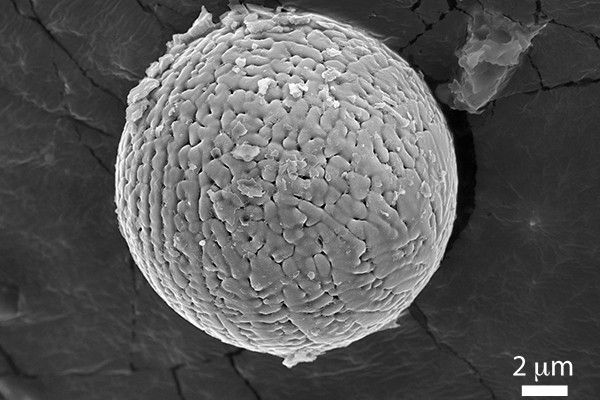Tiny meteorites no larger than grains of sand hold new clues about the atmosphere on ancient Earth, according to scientists.
Iron micrometeorites found in ancient soils suggest carbon dioxide made up 25 to 50 percent of Earth’s atmosphere 2.7 billion years ago, and that pressure at sea level may have been lower than today, Penn State researchers said.
The meteorites melted as they streaked through the atmosphere and oxidized as they encountered atmospheric gases. Evidence of the oxidation remains on the tiny fragments that landed on Earth. The samples serve as a unique proxy for conditions in the upper atmosphere, the scientists said.
“This is a promising new tool for figuring out the composition of the upper atmosphere billions of years in the past,” said Rebecca Payne, a doctoral candidate in geosciences and astrobiology at Penn State. Payne is lead author of the study, published recently in the journal Proceedings of the National Academy of Sciences.
Read more at Penn State
Image: Iron micrometeorites, like seen here under a microscope, can provide new clues about the composition of the Earth's upper atmosphere 2.7 billion years ago. CREDIT: Provided by Andrew Tomkins


